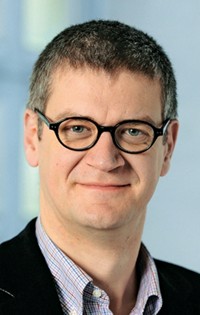Advertisement
Grab your lab coat. Let's get started
Welcome!
Welcome!
Create an account below to get 6 C&EN articles per month, receive newsletters and more - all free.
It seems this is your first time logging in online. Please enter the following information to continue.
As an ACS member you automatically get access to this site. All we need is few more details to create your reading experience.
Not you? Sign in with a different account.
Not you? Sign in with a different account.
ERROR 1
ERROR 1
ERROR 2
ERROR 2
ERROR 2
ERROR 2
ERROR 2
Password and Confirm password must match.
If you have an ACS member number, please enter it here so we can link this account to your membership. (optional)
ERROR 2
ACS values your privacy. By submitting your information, you are gaining access to C&EN and subscribing to our weekly newsletter. We use the information you provide to make your reading experience better, and we will never sell your data to third party members.
Environment
Two Chemists Garner Catalysis Prizes
by AALOK MEHTA
February 28, 2005
| A version of this story appeared in
Volume 83, Issue 9
The North American Catalysis Society has named Matthew Neurock and Henrik Topsøe as winners of two of the organization's top prizes. Neurock, a professor of chemical engineering and chemistry at the University of Virginia, Charlottesville, will receive the Paul H. Emmett Award in Fundamental Catalysis. Topsøe, manager of fundamental research at catalyst manufacturer Haldor Topsøe, Lyngby, Denmark, is being honored with the Eugene J. Houdry Award in Applied Catalysis.
The Emmett Award, which is presented to researchers who are age 45 or younger, is sponsored by the Davison Chemical Division of W.R. Grace. The award is given for advancing understanding of basic catalytic phenomena, including the nature of active sites and species and the sequences of reaction mechanisms. Neurock has won wide respect for his computational studies of complex problems in heterogeneous catalysis and surface chemistry.
Neurock's research group has showed that adding ruthenium to platinum fuel-cell anodes increases the cell's CO tolerance in the presence of water by providing surface sites at which hydroxyl species can form and subsequently oxidize CO to CO2.
The Virginia researcher has also developed techniques for combining quantum-chemically derived quantities, such as reaction energies and rate constants, with Monte Carlo simulation procedures. Neurock used the approach to model organic surface reactions and predict the effect that adjusting reaction conditions would have on reaction yields and selectivities.
The Houdry Award, which is sponsored by Süd Chemie (formerly United Catalysts), Munich, recognizes individual contributions to catalysis with emphasis on new and improved catalysts and processes and their application. Topsøe's work on hydrotreating catalysts--in particular, elucidating the structure of the Co–;Mo–S phase of MoS2 hydrodesulfurization (HDS) catalysts--has established Topsøe as an expert in this industrially critical area. HDS is used to strip environmental pollutants from heavy crude oil by converting sulfur-containing molecules in the raw material to volatile hydrogen sulfide.
Colleagues note that Topsøe's "passionate efforts" to apply state-of-the-art tools and concepts to solve complex industrial problems "are without equal in the international catalysis community today." That passion led the company to develop transmission electron microscopy methods that provide atomic-level information about catalysts under high-pressure and high-temperature conditions. The methods have been used to uncover the role of barium in promoting ruthenium-based catalysts for ammonia synthesis. The techniques have also revealed the dynamic role of nanometer-sized nickel particles that catalyze carbon nanofiber growth via hydrocarbon decomposition.






Join the conversation
Contact the reporter
Submit a Letter to the Editor for publication
Engage with us on Twitter